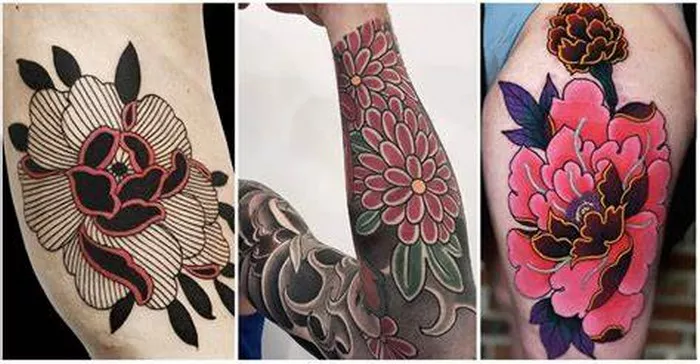Tattoos have transcended mere body adornment to become powerful symbols of culture, identity, and personal expression. Among the myriad tattoo styles that have emerged across the globe, Japanese traditional tattooing stands out for its rich history, intricate designs, and deep cultural significance. Rooted in centuries-old traditions, Japanese tattoo artistry, known as irezumi or horimono, has captivated enthusiasts worldwide with its elaborate motifs, bold colors, and profound symbolism. In this article, we delve into the captivating world of Japanese traditional tattoo style, exploring its origins, key characteristics, symbolism, and enduring influence.
Origins and Evolution
The origins of Japanese traditional tattooing can be traced back thousands of years to the indigenous Ainu people, who inhabited what is now known as Hokkaido, Japan’s northernmost island. Ainu women adorned themselves with facial tattoos, a practice believed to symbolize maturity, social status, and spiritual protection. However, it was during the Edo period (1603-1868) that tattooing in Japan experienced a significant transformation and gained widespread popularity.
During this period, tattoos served various purposes, ranging from marking criminals as a form of punishment to signifying allegiance to a particular clan or samurai warrior. Additionally, tattooing emerged as a form of artistic expression, with skilled tattoo artists, known as horishi or horimono, honing their craft and developing intricate designs inspired by Japanese mythology, folklore, and nature.
The modern iteration of Japanese traditional tattoo style, characterized by its vibrant colors, dynamic compositions, and meticulous detailing, emerged during the late 19th and early 20th centuries. Influenced by the ukiyo-e woodblock prints of renowned artists such as Katsushika Hokusai and Utagawa Hiroshige, tattooists began incorporating elements of these iconic artworks into their designs, creating visually stunning compositions that celebrated Japan’s cultural heritage.
Key Characteristics
Japanese traditional tattoo style is renowned for its distinct aesthetic features, which set it apart from other tattooing traditions. Some of the key characteristics of this style include:
1. Bold, Dynamic Imagery: Japanese traditional tattoos typically feature bold, dynamic imagery characterized by powerful motifs such as dragons, tigers, koi fish, geisha, samurai warriors, and mythical creatures like the phoenix and kirin. These motifs are often depicted in action-packed scenes, conveying a sense of movement and energy.
2. Vibrant Color Palette: Color plays a crucial role in Japanese traditional tattooing, with artists utilizing a vibrant palette of hues to bring their designs to life. Traditional colors such as red, black, green, and blue are often augmented with dynamic shading techniques to create depth and dimensionality.
3. Detailed Artistry: Japanese traditional tattoos are renowned for their intricate detailing and meticulous craftsmanship. Artists employ fine line work, intricate patterns, and subtle shading techniques to achieve a level of precision and realism that is truly breathtaking.
4. Symbolism and Meaning: Every element of a Japanese traditional tattoo carries deep symbolic meaning, drawing from Japan’s rich cultural and spiritual heritage. For example, dragons are often associated with strength, wisdom, and protection, while koi fish symbolize perseverance, courage, and overcoming adversity.
5. Composition and Placement: Japanese traditional tattoos are meticulously designed to flow seamlessly across the body, with careful consideration given to composition and placement. Full-body suits, known as irezumi, are a hallmark of this style, covering the wearer from neck to ankle in a cohesive and visually striking design.
Symbolism and Meaning
Japanese traditional tattoos are steeped in symbolism, with each motif carrying its own unique significance. Some of the most common motifs and their meanings include:
1. Dragons: Symbolize strength, wisdom, and protection. In Japanese mythology, dragons are revered creatures associated with the power of the elements and the divine.
2. Tigers: Represent courage, ferocity, and protection against evil spirits. Tigers are often depicted alongside bamboo or peony flowers, symbolizing strength and resilience.
3. Koi Fish: Symbolize perseverance, courage, and overcoming adversity. In Japanese folklore, koi fish are believed to transform into dragons after successfully swimming upstream against the current.
4. Geisha: Represent beauty, grace, and femininity. Geisha tattoos often depict these iconic figures in traditional attire, surrounded by cherry blossoms or other symbols of elegance and refinement.
5. Samurai Warriors: Symbolize honor, loyalty, and martial prowess. Samurai tattoos pay homage to Japan’s feudal past and the warrior code of bushido, emphasizing virtues such as courage, discipline, and self-sacrifice.
Enduring Influence
Despite being rooted in centuries-old traditions, Japanese traditional tattoo style continues to exert a profound influence on contemporary tattooing practices around the world. Its timeless aesthetic appeal, rich cultural heritage, and deep symbolism have earned it a dedicated following among tattoo enthusiasts and artists alike.
In recent years, Japanese traditional tattoos have experienced a resurgence in popularity, with renowned tattoo artists from Japan and beyond showcasing their mastery of this iconic style. International tattoo conventions, exhibitions, and publications have further fueled interest in Japanese traditional tattooing, fostering cross-cultural exchange and collaboration among artists from diverse backgrounds.
Moreover, the rise of social media platforms has enabled tattoo enthusiasts to connect with like-minded individuals and share their love for Japanese traditional tattoos with a global audience. Online forums, Instagram accounts, and YouTube channels dedicated to this style provide a platform for artists to showcase their work, exchange ideas, and inspire future generations of tattoo enthusiasts.
In conclusion, Japanese traditional tattoo style represents a timeless fusion of art, culture, and spirituality that continues to captivate audiences worldwide. From its ancient origins to its modern-day resurgence, this iconic tattooing tradition stands as a testament to the enduring power of human creativity and expression.
Whether adorned with dragons, tigers, or geisha, Japanese traditional tattoos serve as enduring symbols of strength, resilience, and the indomitable spirit of the human soul. As long as there are artists willing to uphold its traditions and enthusiasts eager to wear its designs, the legacy of Japanese traditional tattooing will continue to thrive and inspire for generations to come.


